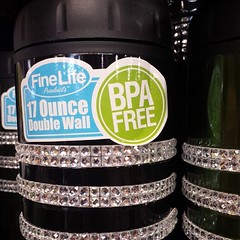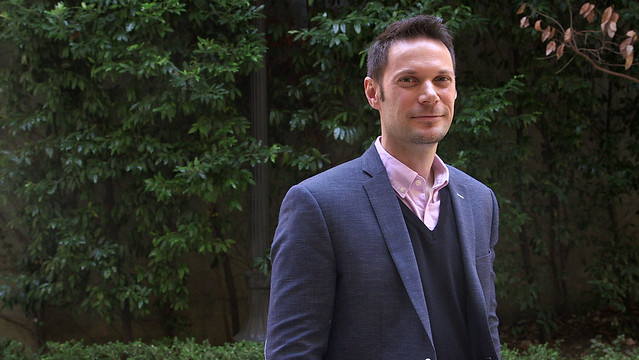http://e-info.org.tw/node/117900
「BPA-free」一樣毒! 塑膠容器含雙酚S 有害卵子品質
文字大小
1081 1 Share3
本報2016年8月23日綜合外電報導,姜唯編譯;蔡麗伶審校
用來製造聚碳酸酯(PC)水壺、環氧樹脂和熱感應紙收據等多種用品的雙酚A(BPA),被發現有害人體生殖系統後,逐漸被雙酚S(BPS)取代,不過美國加州大學洛杉磯分校學者發現,BPS其實跟BPA一樣危險,而且能對女性卵子造成傷害的劑量比BPA還低。
 |
| 越來越多的塑膠水壺、餐具等容器,都會標榜「BPA-free」,但未必保證安全。圖片來源:ANDREA JANDA(CC BY-NC-ND 2.0) |
由於來自消費者的壓力越來越高,製造商紛紛推出標榜「BPA-free」的產品,以其他物質取代BPA。
不過,在尋找有毒物質替代料時,製造商傾向採用具相似物理特性的物質來替代,但我們並不清楚這些替代物質的安全性。因此,研究人員開始研究BPS是否對生殖系統有和BPA有類似的影響。
研究人員讓線蟲暴露於接近人體內濃度的BPA和BPS,觀察線蟲的整個生殖期並測量牠們的生殖能力。結果發現,和控制組相比,接觸到BPA或BPS或兩者皆有的線蟲,生殖能力都下降。令人驚訝的是,BPS展現出效果的濃度比BPA還低,這表示BPS對生殖系統的傷害力可能比BPA更強。這個效果在幼小胚胎的生存能力上更加顯著。
這樣的研究結果應可推論至人體,因為線蟲受影響的生殖機制,哺乳動物也有。而如今BPS已經廣泛的應用在各式消費性產品中。
「這份研究清楚顯示,消費性產品製造商在替換有毒化學物質時,是採取頭痛醫頭、腳痛醫腳的態度。急需要一套安全評估辦法,在替換物質和化學品混合物上架前把關。不過好消息是,目前已有許多政府計畫和學術實驗室正在朝這個方向努力。」UCLA Fielding公衛學院環境健康科學助理教授亞拉德(Patrick Allard)說。
美國加州大學洛杉磯分校學者亞拉德(Patrick Allard),以實驗證明BPS的健康風險。圖片來源:UCLA。
【相關文章】
【參考資料】
- EurekAlert(2016年8月9日),Plastic manufacturing chemical BPS harms egg cells, study suggests
PUBLIC RELEASE:
Plastic manufacturing chemical BPS harms egg cells, study suggests

IMAGE: ALLARD IS ASSISTANT PROFESSOR OF ENVIRONMENTAL HEALTH SCIENCES AT THE UCLA FIELDING SCHOOL OF PUBLIC HEALTH AND THE STUDY'S SENIOR AUTHOR view more
CREDIT: © UCLA FIELDING SCHOOL OF PUBLIC HEALTH
FINDINGS
Bisphenol S, a chemical used to manufacture polycarbonate water bottles and many other products such as epoxy glues and cash receipts, is an increasingly common replacement for bisphenol A, the of which was discontinued because of concerns about its harmful effects on the reproductive system. In a new study, UCLA researchers have found that BPS is just as harmful to the reproductive system as the chemical it replaced. BPS damages a woman's eggs and at lower doses than BPA.
BACKGROUND
While looking for replacements to toxic chemicals, manufacturers tend to choose substitute chemicals that, while technically different, often share similar physical properties. Due to increasing consumer pressure, companies have replaced BPA with other related compounds now found in many "BPA-free" products. However we do not know how safe these substitutes are. These uncertainties led the researchers to ask whether BPS could impart detrimental effects on reproduction similar to BPA's.
METHOD
The researchers exposed a common laboratory model, the roundworm, to several concentrations of BPA and/or BPS that approximate the levels of BPA and/or BPS found in humans. They followed the worms through the duration of their reproductive periods and measured their fertility.
The researchers observed that compared to the controls, worms exposed to either BPA or BPS, or combination of the two, had decreased fertility. Surprisingly, these effects were seen at lower internal BPS doses than those of BPA suggesting that BPS may be more damaging to the reproductive system. This was especially significant when they examined the viability of young embryos.
IMPACT
These findings are also a cause for concern in humans as the same reproductive processes that are disrupted by BPS in roundworms are found in mammals. Furthermore, as noted above BPS products are already found in a plethora of consumer products.
"This study clearly illustrates the issue with the 'whack-a-mole' approach to chemical replacement in consumer products," said Patrick Allard, assistant professor of environmental health sciences at the UCLA Fielding School of Public Health, and the study's senior author. "There is a great need for the coordinated safety assessment of multiple substitutes and mixtures of chemicals before their use in product replacement. But the good news is that a number of governmental programs and academic labs are now moving in that direction".
###
AUTHORS
The authors of the study are Yichang Chen, Le Shu, Zhiqun Qiu, Dong Yeon Lee, Sara Settle, Shane Que Hee, Donatello Telesca, Xia Yang and Patrick Allard, all of UCLA.
JOURNAL
The study was published in the journal PLOS Genetics.
FUNDING
The research was funded by the National Institutes of Health/National Institute of Environmental Health Sciences (R00 NIH/NIEHS R00ES020353); National Institute of Environmental Health Sciences' Training in Molecular Toxicology (T32 NIH/NIEHS ES015457); Center for Alternatives to Animal Testing; and the Burroughs Wellcome Fund's Innovation in Regulatory Science Award.


沒有留言:
張貼留言